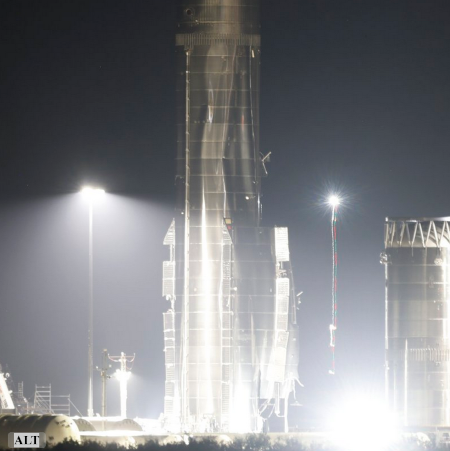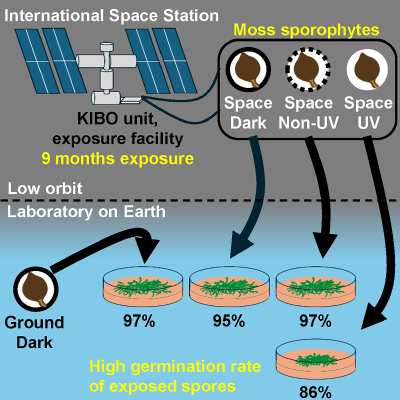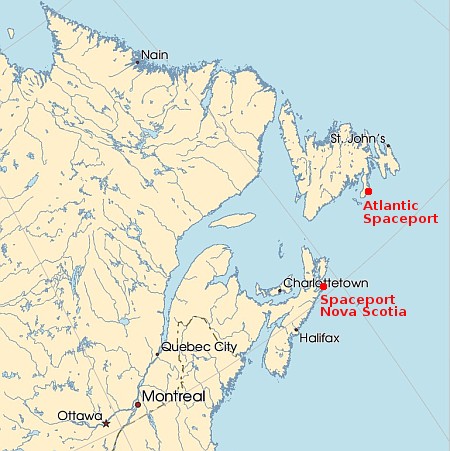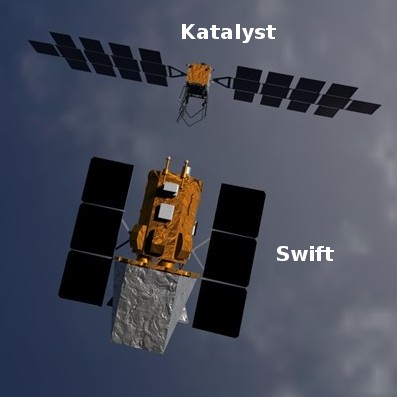Two Middle Eastern startups sign deal to build a mini-shuttle dubbed Oryx

Leap71’s smallscale aerospike engine during testing.
Click for original image.
A rocket startup in the UAE, Aspire, has signed a partnership deal with a rocket engine startup in Dubai, Leap71, to build a fully reusable mini-shuttle dubbed Oryx, not unlike the Dream Chaser mini-shuttle that Sierra Space has been trying to launch now for more than a decade.
As part of the plan, Leap71 will develop two types of engines for Oryx, including one using an aerospike nozzle.
Building on their ongoing cooperation, Aspire Space is now contracting LEAP 71 to develop the rocket engines powering the Oryx’s second stage. Each engine will produce 20 tons (200 kN) of thrust, and the partners are pursuing two parallel propulsion paths: a conventional engine and a novel aerospike configuration.
The aerospike concept, long studied but never flown, offers superior efficiency across both atmospheric and vacuum flight regimes — making it particularly well suited for reusable launch systems. LEAP 71 gained international recognition in December 2024 for successfully testing a 5 kN aerospike engine, validating key aspects of its design.
The picture to the right shows the LEAP aerospike engine during those 2024 tests. As I noted then, “The spike in the center acts as one wall of the nozzle, and the changing pressure of the atmosphere acting as the other side of the nozzle, allowing the nozzle size to change as the rocket rises, thus making its thrust as efficient as possible.”
Those tests were done in the United Kingdom, suggesting the company relied on British engineers using financing from Dubai. Even so, to go from that smallscale test to a full engine launching both a rocket and a reusable mini-shuttle will be a major challenge. Or to put it another way, to say their plans are aspirational is an understatement.
Hat tip BtB’s stringer Jay.

Leap71’s smallscale aerospike engine during testing.
Click for original image.
A rocket startup in the UAE, Aspire, has signed a partnership deal with a rocket engine startup in Dubai, Leap71, to build a fully reusable mini-shuttle dubbed Oryx, not unlike the Dream Chaser mini-shuttle that Sierra Space has been trying to launch now for more than a decade.
As part of the plan, Leap71 will develop two types of engines for Oryx, including one using an aerospike nozzle.
Building on their ongoing cooperation, Aspire Space is now contracting LEAP 71 to develop the rocket engines powering the Oryx’s second stage. Each engine will produce 20 tons (200 kN) of thrust, and the partners are pursuing two parallel propulsion paths: a conventional engine and a novel aerospike configuration.
The aerospike concept, long studied but never flown, offers superior efficiency across both atmospheric and vacuum flight regimes — making it particularly well suited for reusable launch systems. LEAP 71 gained international recognition in December 2024 for successfully testing a 5 kN aerospike engine, validating key aspects of its design.
The picture to the right shows the LEAP aerospike engine during those 2024 tests. As I noted then, “The spike in the center acts as one wall of the nozzle, and the changing pressure of the atmosphere acting as the other side of the nozzle, allowing the nozzle size to change as the rocket rises, thus making its thrust as efficient as possible.”
Those tests were done in the United Kingdom, suggesting the company relied on British engineers using financing from Dubai. Even so, to go from that smallscale test to a full engine launching both a rocket and a reusable mini-shuttle will be a major challenge. Or to put it another way, to say their plans are aspirational is an understatement.
Hat tip BtB’s stringer Jay.

















